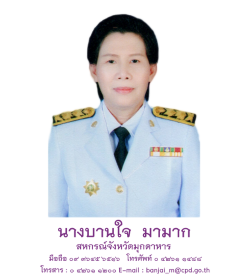×
ยินดีต้อนรับสู่ ฟอรัม Kunena!
อยากรู้จังเลยว่าคุณชอบอะไร รู้จักกับที่นี่ได้อย่างไร และสาเหตุจูงใจอะไรจึงลงทะเบียนเป็นสมาชิกกับทางเรา ช่วยแจ้งให้เราได้ทราบหน่อยได้ไหม
ยินดีต้อนรับสมาชิกใหม่ทุกท่าน และหวังว่าทางเราจะได้รับใช้คุณเยี่ยงนี้ตลอดไป
อยากรู้จังเลยว่าคุณชอบอะไร รู้จักกับที่นี่ได้อย่างไร และสาเหตุจูงใจอะไรจึงลงทะเบียนเป็นสมาชิกกับทางเรา ช่วยแจ้งให้เราได้ทราบหน่อยได้ไหม
ยินดีต้อนรับสมาชิกใหม่ทุกท่าน และหวังว่าทางเราจะได้รับใช้คุณเยี่ยงนี้ตลอดไป
жесткое групповое порно
- MichaelFlell
- Topic Author
- Visitor
-

2 months 2 weeks ago #2648667
by MichaelFlell
Replied by MichaelFlell on topic kraken войти
Groundbreaking telescope reveals first piece of new cosmic map
кракен даркнет
Greetings, earthlings! I’m Jackie Wattles, and I’m thrilled to be a new name bringing awe to your inbox.
I’ve covered space exploration for nearly a decade at CNN, and there has never been a more exciting time to follow space and science discoveries. As researchers push forward to explore and understand the cosmos, advancements in technology are sparking rapid developments in rocketry, astronomical observatories and a multitude of scientific instruments.
kra17att.cc
Кракен тор
Look no further than the missions racing to unlock dark matter and the mysterious force known as dark energy, both so named precisely because science has yet to explain these phenomena.
Astronomers have never detected dark matter, but they believe it makes up about 85% of the total matter in the universe. Meanwhile, the existence of dark energy helps researchers explain why the universe is expanding — and why that expansion is speeding up.
Extraordinary new scientific instruments are churning out trailblazing data, ready to reshape how scientists view the cosmos.
A prime example is the European Space Agency’s wide-angle Euclid telescope that launched in 2023 to investigate the riddles of dark energy and dark matter.
Euclid this week delivered the first piece of a cosmic map — containing about 100 million stars and galaxies — that will take six years to create.
These stunning 3D observations may help scientists see how dark matter warps light and curves space across galaxies.
Meanwhile, on a mountaintop in northern Chile, the US National Science Foundation and Stanford University researchers are preparing to power up the world’s largest digital camera inside the Vera C. Rubin Observatory.
Unearthed
In the mountains of Uzbekistan, a research team used lasers strapped to a flying robot to uncover two cities buried and lost for centuries.
The anthropologists said they had mapped these forgotten medieval towns for the first time — located at a key crossroad of ancient silk trade routes — using a drone equipped with LiDAR, or light detection and ranging equipment.
When nature reclaims what’s left of once thriving civilizations, scientists are increasingly turning to remote sensing to peer through dense vegetation.
The images revealed two large settlements dotted with watchtowers, fortresses, complex buildings, plazas and pathways that tens of thousands of people may have called home.
кракен даркнет
Greetings, earthlings! I’m Jackie Wattles, and I’m thrilled to be a new name bringing awe to your inbox.
I’ve covered space exploration for nearly a decade at CNN, and there has never been a more exciting time to follow space and science discoveries. As researchers push forward to explore and understand the cosmos, advancements in technology are sparking rapid developments in rocketry, astronomical observatories and a multitude of scientific instruments.
kra17att.cc
Кракен тор
Look no further than the missions racing to unlock dark matter and the mysterious force known as dark energy, both so named precisely because science has yet to explain these phenomena.
Astronomers have never detected dark matter, but they believe it makes up about 85% of the total matter in the universe. Meanwhile, the existence of dark energy helps researchers explain why the universe is expanding — and why that expansion is speeding up.
Extraordinary new scientific instruments are churning out trailblazing data, ready to reshape how scientists view the cosmos.
A prime example is the European Space Agency’s wide-angle Euclid telescope that launched in 2023 to investigate the riddles of dark energy and dark matter.
Euclid this week delivered the first piece of a cosmic map — containing about 100 million stars and galaxies — that will take six years to create.
These stunning 3D observations may help scientists see how dark matter warps light and curves space across galaxies.
Meanwhile, on a mountaintop in northern Chile, the US National Science Foundation and Stanford University researchers are preparing to power up the world’s largest digital camera inside the Vera C. Rubin Observatory.
Unearthed
In the mountains of Uzbekistan, a research team used lasers strapped to a flying robot to uncover two cities buried and lost for centuries.
The anthropologists said they had mapped these forgotten medieval towns for the first time — located at a key crossroad of ancient silk trade routes — using a drone equipped with LiDAR, or light detection and ranging equipment.
When nature reclaims what’s left of once thriving civilizations, scientists are increasingly turning to remote sensing to peer through dense vegetation.
The images revealed two large settlements dotted with watchtowers, fortresses, complex buildings, plazas and pathways that tens of thousands of people may have called home.
Reply to MichaelFlell
- Albertjem
- Topic Author
- Visitor
-

2 months 2 weeks ago #2648948
by Albertjem
Replied by Albertjem on topic kraken даркнет
Scientists say skeletal remains found in castle well belong to figure from 800-year-old saga
kraken зеркало
Researchers have connected the identity of skeletal remains found in a well at Norway’s Sverresborg castle to a passage in a centuries-old Norse text.
The 800-year-old Sverris saga, which follows the story of the real-life King Sverre Sigurdsson, includes the tossing of the body of a dead man — later known as “Well-man” — down a well during a military raid in central Norway in 1197.
kra16f.cc
kra18.cc
It’s likely, according to the text, that raiders lobbed the body into the well to poison the main water source for locals, but little else is said about the man or who he was in the saga.
Researchers initially uncovered the bones in the castle’s well in 1938, but they were only able to carry out a visual analysis at the time. Now, scientists have an array of analytical techniques at their disposal, including genetic sequencing and radiocarbon dating.
A new study on the remains, published Friday in the Cell Press journal iScience, reveals unprecedented insights into Well-man’s appearance based on in-depth research on samples of his teeth.
“This is the first time that a person described in these historical texts has actually been found,” said study coauthor Michael D. Martin, a professor in the department of natural history at the Norwegian University of Science and Technology’s University Museum in Trondheim, in a statement.
“There are a lot of these medieval and ancient remains all around Europe, and they’re increasingly being studied using genomic methods.”
The findings not only shed fresh light on what Well-man looked like but also who he was, with a surprising twist about how he ended up in a Norse saga.
kraken зеркало
Researchers have connected the identity of skeletal remains found in a well at Norway’s Sverresborg castle to a passage in a centuries-old Norse text.
The 800-year-old Sverris saga, which follows the story of the real-life King Sverre Sigurdsson, includes the tossing of the body of a dead man — later known as “Well-man” — down a well during a military raid in central Norway in 1197.
kra16f.cc
kra18.cc
It’s likely, according to the text, that raiders lobbed the body into the well to poison the main water source for locals, but little else is said about the man or who he was in the saga.
Researchers initially uncovered the bones in the castle’s well in 1938, but they were only able to carry out a visual analysis at the time. Now, scientists have an array of analytical techniques at their disposal, including genetic sequencing and radiocarbon dating.
A new study on the remains, published Friday in the Cell Press journal iScience, reveals unprecedented insights into Well-man’s appearance based on in-depth research on samples of his teeth.
“This is the first time that a person described in these historical texts has actually been found,” said study coauthor Michael D. Martin, a professor in the department of natural history at the Norwegian University of Science and Technology’s University Museum in Trondheim, in a statement.
“There are a lot of these medieval and ancient remains all around Europe, and they’re increasingly being studied using genomic methods.”
The findings not only shed fresh light on what Well-man looked like but also who he was, with a surprising twist about how he ended up in a Norse saga.
Reply to Albertjem
- Terryjinia
- Topic Author
- Visitor
-

2 months 2 weeks ago #2648955
by Terryjinia
Replied by Terryjinia on topic кракен даркнет
This teen became the youngest person to summit the world’s highest peaks. Now he wants others to follow in his footsteps
kraken тор браузер
Nima Rinji Sherpa’s ears are still tinged black from wind chill, an occupational hazard of climbing to heights where humans struggle to breathe, and where the weather can turn deadly in an instant.
This month, Nima became the youngest person to summit all 14 of the world’s highest peaks, but the 18-year-old Nepalese mountaineer is already getting ready for his next big feat.
kra16f.cc
Кракен тор
Speaking to CNN via video call from the Nepali capital Kathmandu last week, Nima said he’s taking a couple weeks’ rest before preparing to climb the world’s eighth-highest mountain, Manaslu, with Italian mountaineer Simone Moro – in winter, alpine-style.
“That means we’re climbing an 8,000-meter mountain in winter… There’s no fixed ropes for us, there’s no (supplemental) oxygen for us, there is no support for us. So, it’s like pure human endurance,” Nima said. “It has never been done in the history of mountaineering.”
After that, “I’ll take some rest,” Nima laughed.
On October 9, Nima reached the top of the 8,027-meter (26,335-foot) Shishapangma along with his partner Pasang Nurbu Sherpa. For Nima, it was the final of the “eight-thousanders,” the 14 peaks recognized by the International Climbing and Mountaineering Federation as standing more than 8,000 meters above sea level.
Describing the moment of summiting the final peak as “pure joy,” Nima said his motivation comes from his family, many of whom are renowned mountaineers.
His father, Tashi Lakpa Sherpa, has climbed Everest nine times, and at age 19 became the youngest person to summit without bottled oxygen. His uncle Mingma Sherpa became the first South Asian climber to summit the 14 peaks in 2011.
“My uncles and my father, they are way more successful than I would ever be because they came from a very small village. To even dream about being this successful, for them it was really hard,” Nima said. “I have the privilege that they didn’t have.”
kraken тор браузер
Nima Rinji Sherpa’s ears are still tinged black from wind chill, an occupational hazard of climbing to heights where humans struggle to breathe, and where the weather can turn deadly in an instant.
This month, Nima became the youngest person to summit all 14 of the world’s highest peaks, but the 18-year-old Nepalese mountaineer is already getting ready for his next big feat.
kra16f.cc
Кракен тор
Speaking to CNN via video call from the Nepali capital Kathmandu last week, Nima said he’s taking a couple weeks’ rest before preparing to climb the world’s eighth-highest mountain, Manaslu, with Italian mountaineer Simone Moro – in winter, alpine-style.
“That means we’re climbing an 8,000-meter mountain in winter… There’s no fixed ropes for us, there’s no (supplemental) oxygen for us, there is no support for us. So, it’s like pure human endurance,” Nima said. “It has never been done in the history of mountaineering.”
After that, “I’ll take some rest,” Nima laughed.
On October 9, Nima reached the top of the 8,027-meter (26,335-foot) Shishapangma along with his partner Pasang Nurbu Sherpa. For Nima, it was the final of the “eight-thousanders,” the 14 peaks recognized by the International Climbing and Mountaineering Federation as standing more than 8,000 meters above sea level.
Describing the moment of summiting the final peak as “pure joy,” Nima said his motivation comes from his family, many of whom are renowned mountaineers.
His father, Tashi Lakpa Sherpa, has climbed Everest nine times, and at age 19 became the youngest person to summit without bottled oxygen. His uncle Mingma Sherpa became the first South Asian climber to summit the 14 peaks in 2011.
“My uncles and my father, they are way more successful than I would ever be because they came from a very small village. To even dream about being this successful, for them it was really hard,” Nima said. “I have the privilege that they didn’t have.”
Reply to Terryjinia
- Orlandocomia
- Topic Author
- Visitor
-

2 months 2 weeks ago #2648995
by Orlandocomia
Replied by Orlandocomia on topic Кракен тор
This teen became the youngest person to summit the world’s highest peaks. Now he wants others to follow in his footsteps
кракен
Nima Rinji Sherpa’s ears are still tinged black from wind chill, an occupational hazard of climbing to heights where humans struggle to breathe, and where the weather can turn deadly in an instant.
This month, Nima became the youngest person to summit all 14 of the world’s highest peaks, but the 18-year-old Nepalese mountaineer is already getting ready for his next big feat.
kra16f.cc
kraken
Speaking to CNN via video call from the Nepali capital Kathmandu last week, Nima said he’s taking a couple weeks’ rest before preparing to climb the world’s eighth-highest mountain, Manaslu, with Italian mountaineer Simone Moro – in winter, alpine-style.
“That means we’re climbing an 8,000-meter mountain in winter… There’s no fixed ropes for us, there’s no (supplemental) oxygen for us, there is no support for us. So, it’s like pure human endurance,” Nima said. “It has never been done in the history of mountaineering.”
After that, “I’ll take some rest,” Nima laughed.
On October 9, Nima reached the top of the 8,027-meter (26,335-foot) Shishapangma along with his partner Pasang Nurbu Sherpa. For Nima, it was the final of the “eight-thousanders,” the 14 peaks recognized by the International Climbing and Mountaineering Federation as standing more than 8,000 meters above sea level.
Describing the moment of summiting the final peak as “pure joy,” Nima said his motivation comes from his family, many of whom are renowned mountaineers.
His father, Tashi Lakpa Sherpa, has climbed Everest nine times, and at age 19 became the youngest person to summit without bottled oxygen. His uncle Mingma Sherpa became the first South Asian climber to summit the 14 peaks in 2011.
“My uncles and my father, they are way more successful than I would ever be because they came from a very small village. To even dream about being this successful, for them it was really hard,” Nima said. “I have the privilege that they didn’t have.”
кракен
Nima Rinji Sherpa’s ears are still tinged black from wind chill, an occupational hazard of climbing to heights where humans struggle to breathe, and where the weather can turn deadly in an instant.
This month, Nima became the youngest person to summit all 14 of the world’s highest peaks, but the 18-year-old Nepalese mountaineer is already getting ready for his next big feat.
kra16f.cc
kraken
Speaking to CNN via video call from the Nepali capital Kathmandu last week, Nima said he’s taking a couple weeks’ rest before preparing to climb the world’s eighth-highest mountain, Manaslu, with Italian mountaineer Simone Moro – in winter, alpine-style.
“That means we’re climbing an 8,000-meter mountain in winter… There’s no fixed ropes for us, there’s no (supplemental) oxygen for us, there is no support for us. So, it’s like pure human endurance,” Nima said. “It has never been done in the history of mountaineering.”
After that, “I’ll take some rest,” Nima laughed.
On October 9, Nima reached the top of the 8,027-meter (26,335-foot) Shishapangma along with his partner Pasang Nurbu Sherpa. For Nima, it was the final of the “eight-thousanders,” the 14 peaks recognized by the International Climbing and Mountaineering Federation as standing more than 8,000 meters above sea level.
Describing the moment of summiting the final peak as “pure joy,” Nima said his motivation comes from his family, many of whom are renowned mountaineers.
His father, Tashi Lakpa Sherpa, has climbed Everest nine times, and at age 19 became the youngest person to summit without bottled oxygen. His uncle Mingma Sherpa became the first South Asian climber to summit the 14 peaks in 2011.
“My uncles and my father, they are way more successful than I would ever be because they came from a very small village. To even dream about being this successful, for them it was really hard,” Nima said. “I have the privilege that they didn’t have.”
Reply to Orlandocomia
- DonaldKah
- Topic Author
- Visitor
-

2 months 2 weeks ago #2649007
by DonaldKah
Replied by DonaldKah on topic kraken shop
Europe’s secret season for travel starts now
кракен даркнет
Summer might be the most popular season for tourism to Europe, but it hardly promises a calm, cool and collected experience.
Who can forget this summer’s protests against overtourism in Barcelona and Mallorca, the wildfires that raged across Greece during the country’s hottest June and July on record and selfie stoplights to help control crowds on the clogged streets of Rome and Florence?
For travelers looking to avoid all that — as well as break less of a sweat literally and financially — welcome to Europe’s secret season.
kra17att.cc
kraken вход
From roughly mid-October to mid-December, shoulder season for travel to Europe comes with fewer crowds, far more comfortable temperatures in places that skew scorching hot during the summer months and plunging prices on airfare and accommodation.
Plunging prices
“The cheapest time to fly to Europe is typically from about the middle point of October to the middle point of December,” said Hayley Berg, lead economist at travel platform Hopper. “Airfare prices during those eight or nine weeks or so will typically be about an average of 40% lower than prices in the peak of summer in June.”
Hopper’s data shows that airfare to Europe from the United States during the period between October 20 and December 8 is averaging between $560 and $630 per ticket — down 9% from this time last year and 5% compared to the same timeframe in 2019.
кракен даркнет
Summer might be the most popular season for tourism to Europe, but it hardly promises a calm, cool and collected experience.
Who can forget this summer’s protests against overtourism in Barcelona and Mallorca, the wildfires that raged across Greece during the country’s hottest June and July on record and selfie stoplights to help control crowds on the clogged streets of Rome and Florence?
For travelers looking to avoid all that — as well as break less of a sweat literally and financially — welcome to Europe’s secret season.
kra17att.cc
kraken вход
From roughly mid-October to mid-December, shoulder season for travel to Europe comes with fewer crowds, far more comfortable temperatures in places that skew scorching hot during the summer months and plunging prices on airfare and accommodation.
Plunging prices
“The cheapest time to fly to Europe is typically from about the middle point of October to the middle point of December,” said Hayley Berg, lead economist at travel platform Hopper. “Airfare prices during those eight or nine weeks or so will typically be about an average of 40% lower than prices in the peak of summer in June.”
Hopper’s data shows that airfare to Europe from the United States during the period between October 20 and December 8 is averaging between $560 and $630 per ticket — down 9% from this time last year and 5% compared to the same timeframe in 2019.
Reply to DonaldKah
- Devindup
- Topic Author
- Visitor
-

2 months 2 weeks ago #2649151
by Devindup
Replied by Devindup on topic кракен
This teen became the youngest person to summit the world’s highest peaks. Now he wants others to follow in his footsteps
kraken ссылка
Nima Rinji Sherpa’s ears are still tinged black from wind chill, an occupational hazard of climbing to heights where humans struggle to breathe, and where the weather can turn deadly in an instant.
This month, Nima became the youngest person to summit all 14 of the world’s highest peaks, but the 18-year-old Nepalese mountaineer is already getting ready for his next big feat.
kra16f.cc
kraken
Speaking to CNN via video call from the Nepali capital Kathmandu last week, Nima said he’s taking a couple weeks’ rest before preparing to climb the world’s eighth-highest mountain, Manaslu, with Italian mountaineer Simone Moro – in winter, alpine-style.
“That means we’re climbing an 8,000-meter mountain in winter… There’s no fixed ropes for us, there’s no (supplemental) oxygen for us, there is no support for us. So, it’s like pure human endurance,” Nima said. “It has never been done in the history of mountaineering.”
After that, “I’ll take some rest,” Nima laughed.
On October 9, Nima reached the top of the 8,027-meter (26,335-foot) Shishapangma along with his partner Pasang Nurbu Sherpa. For Nima, it was the final of the “eight-thousanders,” the 14 peaks recognized by the International Climbing and Mountaineering Federation as standing more than 8,000 meters above sea level.
Describing the moment of summiting the final peak as “pure joy,” Nima said his motivation comes from his family, many of whom are renowned mountaineers.
His father, Tashi Lakpa Sherpa, has climbed Everest nine times, and at age 19 became the youngest person to summit without bottled oxygen. His uncle Mingma Sherpa became the first South Asian climber to summit the 14 peaks in 2011.
“My uncles and my father, they are way more successful than I would ever be because they came from a very small village. To even dream about being this successful, for them it was really hard,” Nima said. “I have the privilege that they didn’t have.”
kraken ссылка
Nima Rinji Sherpa’s ears are still tinged black from wind chill, an occupational hazard of climbing to heights where humans struggle to breathe, and where the weather can turn deadly in an instant.
This month, Nima became the youngest person to summit all 14 of the world’s highest peaks, but the 18-year-old Nepalese mountaineer is already getting ready for his next big feat.
kra16f.cc
kraken
Speaking to CNN via video call from the Nepali capital Kathmandu last week, Nima said he’s taking a couple weeks’ rest before preparing to climb the world’s eighth-highest mountain, Manaslu, with Italian mountaineer Simone Moro – in winter, alpine-style.
“That means we’re climbing an 8,000-meter mountain in winter… There’s no fixed ropes for us, there’s no (supplemental) oxygen for us, there is no support for us. So, it’s like pure human endurance,” Nima said. “It has never been done in the history of mountaineering.”
After that, “I’ll take some rest,” Nima laughed.
On October 9, Nima reached the top of the 8,027-meter (26,335-foot) Shishapangma along with his partner Pasang Nurbu Sherpa. For Nima, it was the final of the “eight-thousanders,” the 14 peaks recognized by the International Climbing and Mountaineering Federation as standing more than 8,000 meters above sea level.
Describing the moment of summiting the final peak as “pure joy,” Nima said his motivation comes from his family, many of whom are renowned mountaineers.
His father, Tashi Lakpa Sherpa, has climbed Everest nine times, and at age 19 became the youngest person to summit without bottled oxygen. His uncle Mingma Sherpa became the first South Asian climber to summit the 14 peaks in 2011.
“My uncles and my father, they are way more successful than I would ever be because they came from a very small village. To even dream about being this successful, for them it was really hard,” Nima said. “I have the privilege that they didn’t have.”
Reply to Devindup
Time to create page: 2.730 seconds












